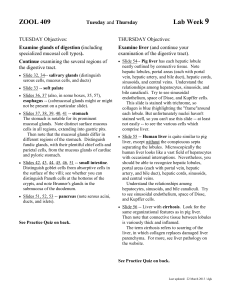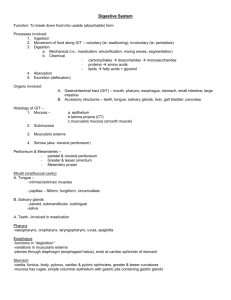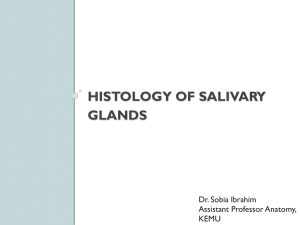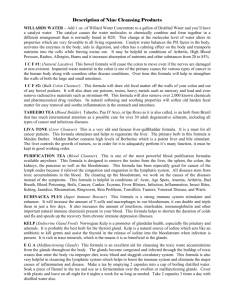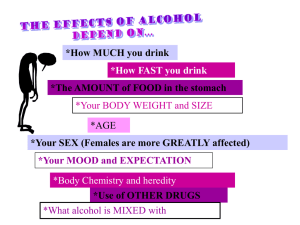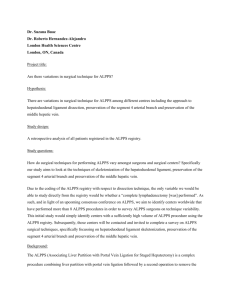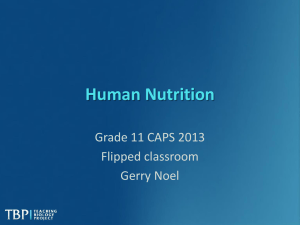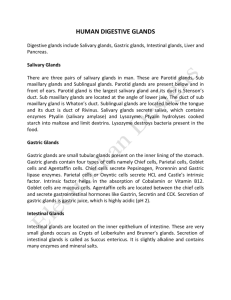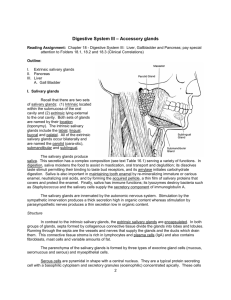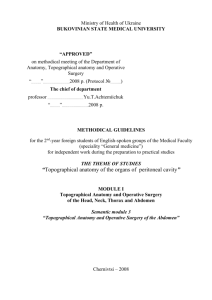LAB 9
advertisement
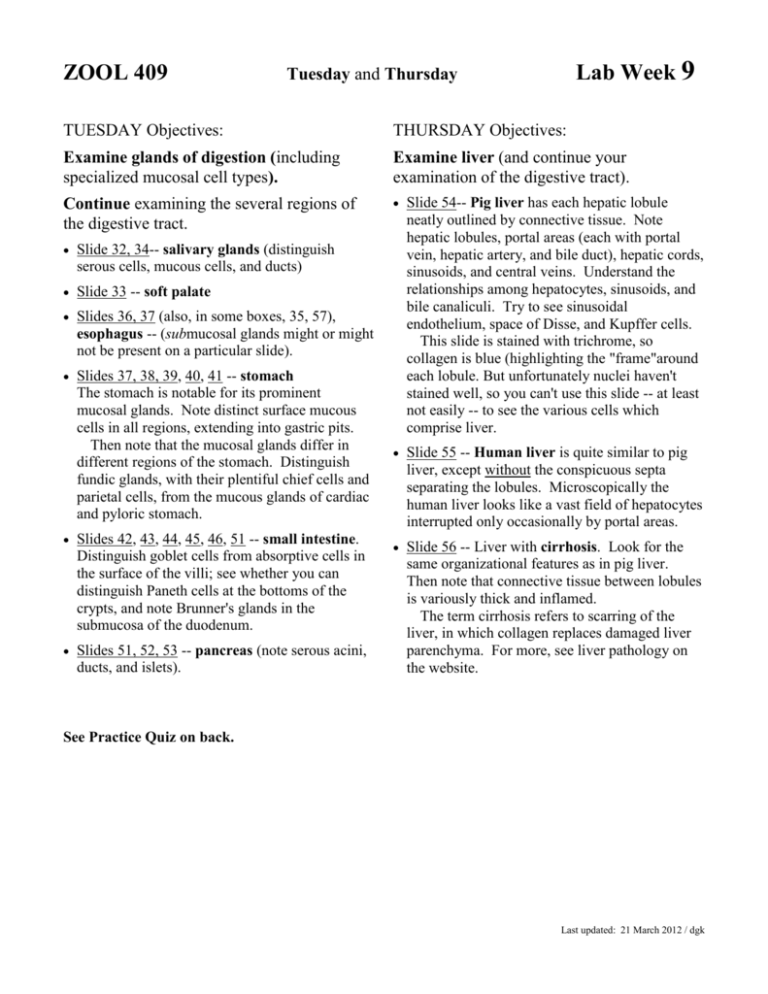
ZOOL 409 Lab Week 9 Tuesday and Thursday TUESDAY Objectives: THURSDAY Objectives: Examine glands of digestion (including specialized mucosal cell types). Examine liver (and continue your examination of the digestive tract). Continue examining the several regions of the digestive tract. Slide 54-- Pig liver has each hepatic lobule neatly outlined by connective tissue. Note hepatic lobules, portal areas (each with portal vein, hepatic artery, and bile duct), hepatic cords, sinusoids, and central veins. Understand the relationships among hepatocytes, sinusoids, and bile canaliculi. Try to see sinusoidal endothelium, space of Disse, and Kupffer cells. This slide is stained with trichrome, so collagen is blue (highlighting the "frame"around each lobule. But unfortunately nuclei haven't stained well, so you can't use this slide -- at least not easily -- to see the various cells which comprise liver. Slide 55 -- Human liver is quite similar to pig liver, except without the conspicuous septa separating the lobules. Microscopically the human liver looks like a vast field of hepatocytes interrupted only occasionally by portal areas. Slide 56 -- Liver with cirrhosis. Look for the same organizational features as in pig liver. Then note that connective tissue between lobules is variously thick and inflamed. The term cirrhosis refers to scarring of the liver, in which collagen replaces damaged liver parenchyma. For more, see liver pathology on the website. Slide 32, 34-- salivary glands (distinguish serous cells, mucous cells, and ducts) Slide 33 -- soft palate Slides 36, 37 (also, in some boxes, 35, 57), esophagus -- (submucosal glands might or might not be present on a particular slide). Slides 37, 38, 39, 40, 41 -- stomach The stomach is notable for its prominent mucosal glands. Note distinct surface mucous cells in all regions, extending into gastric pits. Then note that the mucosal glands differ in different regions of the stomach. Distinguish fundic glands, with their plentiful chief cells and parietal cells, from the mucous glands of cardiac and pyloric stomach. Slides 42, 43, 44, 45, 46, 51 -- small intestine. Distinguish goblet cells from absorptive cells in the surface of the villi; see whether you can distinguish Paneth cells at the bottoms of the crypts, and note Brunner's glands in the submucosa of the duodenum. Slides 51, 52, 53 -- pancreas (note serous acini, ducts, and islets). See Practice Quiz on back. Last updated: 21 March 2012 / dgk Practice Quiz Do not call for a quiz until you are prepared to proceed efficiently. Each of the listed structures should be readily apparent in an appropriate region. The order of listing should call for minimal stage movement between one structure and the next. "Hunting" should seldom be necessary. In addition to the quiz, you are also (as always) encouraged to seek confirmation for your recognition of structures on slides from your reference slide set -- particularly of any features not included in these quizzes. □ □ □ □ Features of tongue: ____Serous salivary gland ____Mucous salivary gland ____Duct Features of salivary gland: ____Serous cells ____Mucous cells ____Duct ____Blood vessel (indicate whether □ artery or vein) □ □ Features of intestinal mucosa: ____Enterocyte on villus ____Goblet cell ____Paneth cell Stomach / duodenum junction: ____Epithelial boundary ____ Stomach surface mucus cells ____ Intestinal absorptive & goblet cells ____Brunner's glands in submucosa Features of pancreas: ____Serous cells ____Islet of Langerhans ____Duct ____Blood vessel (indicate whether artery or vein) Features of esophagus: ____Submucosal gland ____Lymphoid tissue Features of stomach mucosa: ____Gastric pit ____ Surface mucous cell ____Gastric (fundic) glands ____ Parietal cell ____ Chief cell □ Features of liver: ____Portal area ____ Bile duct (branch) ____ Portal vein (branch) ____ Hepatic artery (branch) ____Hepatic cord / hepatocyte ____Sinusoid ____Central vein Last updated: 8 December 2011 / dgk
